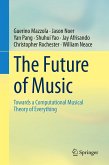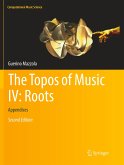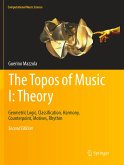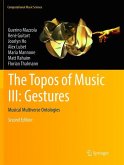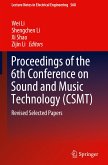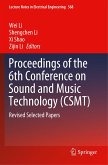The idea of this monograph is to present an overview of decisive theoretical, computational, technological, aesthetical, artistic, economical, and sociological directions to create future music. It features a unique insight into dominant scientific and artistic new directions, which are guaranteed by the authors' prominent publications in books, software, musical, and dance productions.
Applying recent research results from mathematical and computational music theory and software as well as new ideas of embodiment approaches and non-Western music cultures, this book presents new composition methods and technologies. Mathematical, computational, and semiotic models of artistic presence (imaginary time, gestural creativity) as well as strategies are also covered.
This book will be of interest to composers, music technicians, and organizers in the internet-based music industry, who are offered concrete conceptual architectures and tools for their future strategies in musical creativity and production.
Applying recent research results from mathematical and computational music theory and software as well as new ideas of embodiment approaches and non-Western music cultures, this book presents new composition methods and technologies. Mathematical, computational, and semiotic models of artistic presence (imaginary time, gestural creativity) as well as strategies are also covered.
This book will be of interest to composers, music technicians, and organizers in the internet-based music industry, who are offered concrete conceptual architectures and tools for their future strategies in musical creativity and production.
"This is a thought-provoking book of impressive breadth and vision which I recommend to everyone who's interested in mathematical and computational approaches to music." (Santi Spadaro, zbMATH 1479.00010, 2022)
"I found professional, academic musicians' thoughts about future music, computers, software, artificial intelligence (AI), and creativity. I did thoroughly enjoy reading about the changes that have come in the field of music and what they hope for the future. The important audience for this book includes any computer scientist who intends to work with musicians on musical software; learning the terminology and views would be useful for understanding the problems to be solved." (David A. Gustafson, Computing Reviews, November 23, 2020)
"I found professional, academic musicians' thoughts about future music, computers, software, artificial intelligence (AI), and creativity. I did thoroughly enjoy reading about the changes that have come in the field of music and what they hope for the future. The important audience for this book includes any computer scientist who intends to work with musicians on musical software; learning the terminology and views would be useful for understanding the problems to be solved." (David A. Gustafson, Computing Reviews, November 23, 2020)


